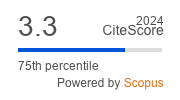Article | Open Access
Intentions to Move from Homelessness to Social Inclusion: The Role of Participation Beliefs, Attitudes and Prior Behaviour
| Views: | 6100 | | | Downloads: | 3418 |
Abstract: A key aim of homelessness services is not only to ensure that homeless people attain a secure home, but that this is a pathway to wider social inclusion. However, relatively little is known about the psychological elements that are essential for homeless people to engage with these pathways, nor whether these elements combine in ways that are predictable from previous research. In the present work, we examined both demographic and behavioural precursors, and contemporaneous psychological predictors, of a set of 49 homeless men’s intentions to engage with a programme to move them toward long-term housing and social inclusion. Contrary to predictions based on subjective utility and rational choice theories, we found that normative pressure and did not directly predict the men’s intentions. Instead, we found that intentions were predicted by their attitudes towards the services, and their specific beliefs about the benefits of particular courses of action (efficacy beliefs), and to a more restricted extent their experience (sociodemographics); and in those with high prior service use histories, only participatory beliefs guided future service use intentions. These findings suggest that it is important to focus on intentions as a highly relevant outcome of interventions, because beliefs about interventions can break the link between past behaviour or habitual service use and future service use. Such interventions may be particularly effective if they focus on the evaluative and efficacy-related aspects of behaviour over time and better understand the benefits the men evaluated the services as offering them.
Keywords: attitudes; homelessness; service use; social inclusion
Published:
© Julie Christian, Dominic Abrams, David Clapham, Daniella Nayyar, Joseph Cotler. This is an open access article distributed under the terms of the Creative Commons Attribution 4.0 license (http://creativecommons.org/licenses/by/4.0), which permits any use, distribution, and reproduction of the work without further permission provided the original author(s) and source are credited.


